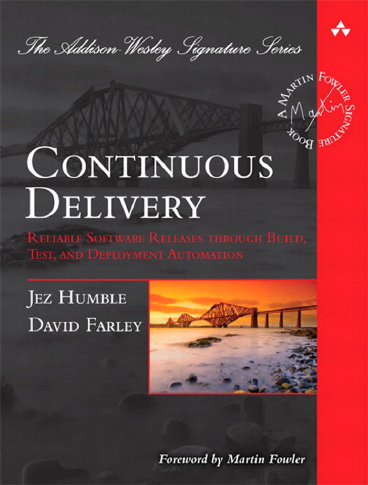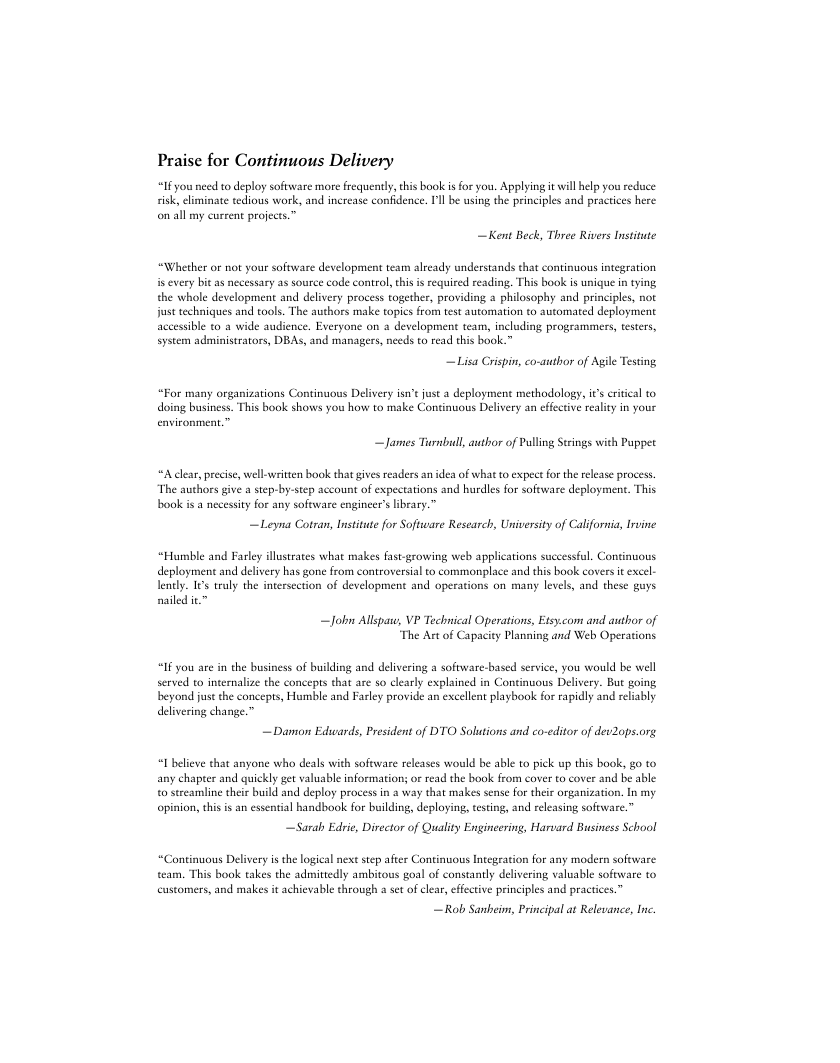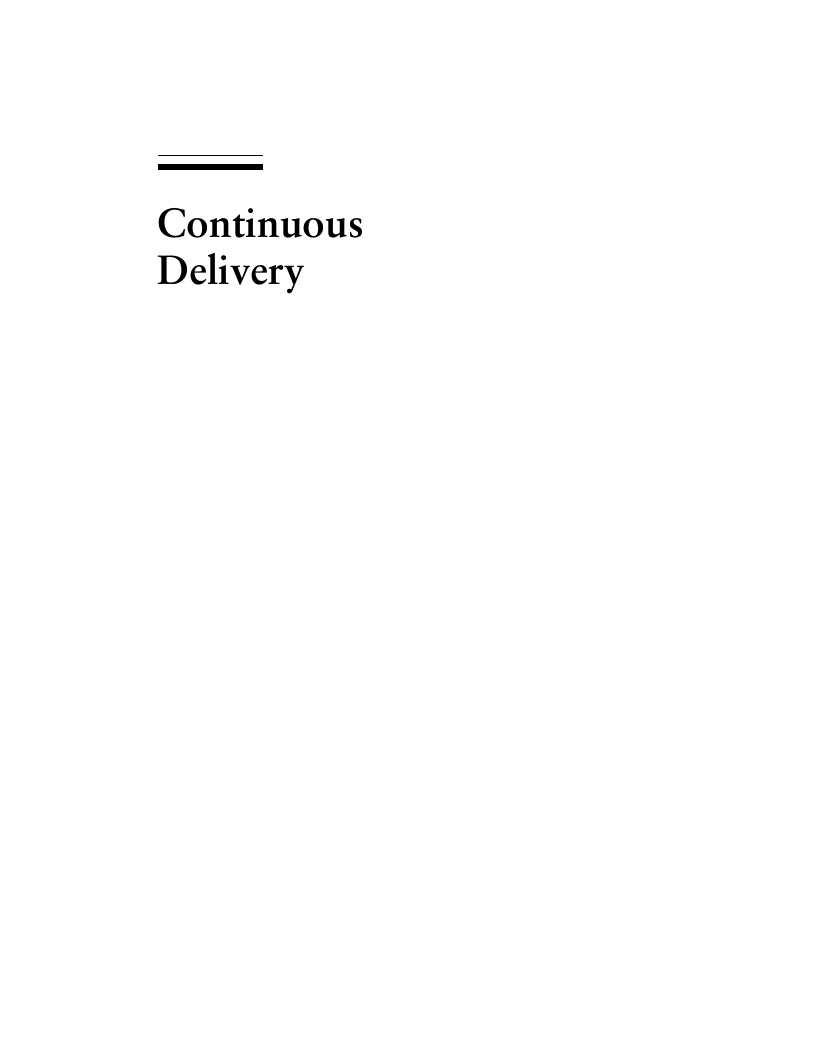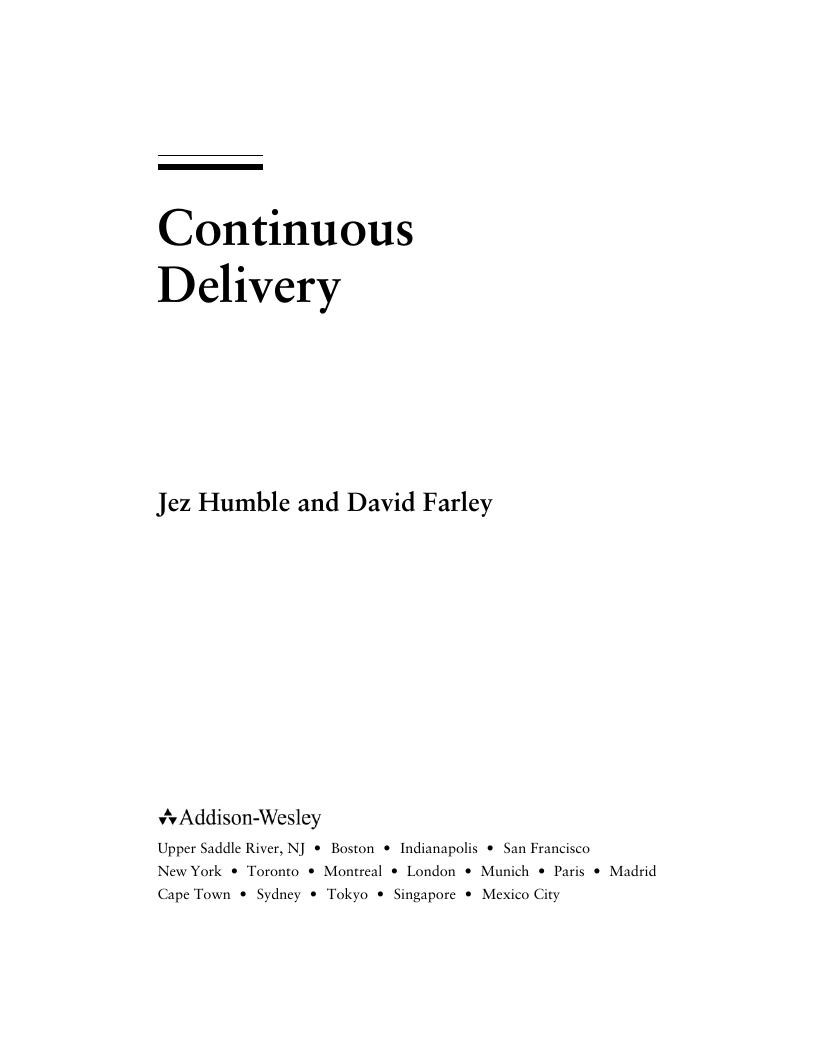Contents
Foreword
Preface
Acknowledgments
About the Authors
Part I: Foundations
Chapter 1: The Problem of Delivering Software
Introduction
Some Common Release Antipatterns
How Do We Achieve Our Goal?
What Are the Benefits?
The Release Candidate
Principles of Software Delivery
Summary
Chapter 2: Configuration Management
Introduction
Using Version Control
Managing Dependencies
Managing Software Configuration
Managing Your Environments
Summary
Chapter 3: Continuous Integration
Introduction
Implementing Continuous Integration
Prerequisites for Continuous Integration
Using Continuous Integration Software
Essential Practices
Suggested Practices
Distributed Teams
Distributed Version Control Systems
Summary
Chapter 4: Implementing a Testing Strategy
Introduction
Types of Tests
Real-Life Situations and Strategies
Process
Summary
Part II: The Deployment Pipeline
Chapter 5: Anatomy of the Deployment Pipeline
Introduction
What Is a Deployment Pipeline?
Deployment Pipeline Practices
The Commit Stage
The Automated Acceptance Test Gate
Subsequent Test Stages
Preparing to Release
Implementing a Deployment Pipeline
Metrics
Summary
Chapter 6: Build and Deployment Scripting
Introduction
An Overview of Build Tools
Principles and Practices of Build and Deployment Scripting
Project Structure for Applications That Target the JVM
Deployment Scripting
Tips and Tricks
Summary
Chapter 7: The Commit Stage
Introduction
Commit Stage Principles and Practices
The Results of the Commit Stage
Commit Test Suite Principles and Practices
Summary
Chapter 8: Automated Acceptance Testing
Introduction
Why Is Automated Acceptance Testing Essential?
Creating Acceptance Tests
The Application Driver Layer
Implementing Acceptance Tests
The Acceptance Test Stage
Acceptance Test Performance
Summary
Chapter 9: Testing Nonfunctional Requirements
Introduction
Managing Nonfunctional Requirements
Programming for Capacity
Measuring Capacity
The Capacity-Testing Environment
Automating Capacity Testing
Adding Capacity Tests to the Deployment Pipeline
Additional Benefits of a Capacity Test System
Summary
Chapter 10: Deploying and Releasing Applications
Introduction
Creating a Release Strategy
Deploying and Promoting Your Application
Rolling Back Deployments and Zero-Downtime Releases
Emergency Fixes
Continuous Deployment
Tips and Tricks
Summary
Part III: The Delivery Ecosystem
Chapter 11: Managing Infrastructure and Environments
Introduction
Understanding the Needs of the Operations Team
Modeling and Managing Infrastructure
Managing Server Provisioning and Configuration
Managing the Configuration of Middleware
Managing Infrastructure Services
Virtualization
Cloud Computing
Monitoring Infrastructure and Applications
Summary
Chapter 12: Managing Data
Introduction
Database Scripting
Incremental Change
Rolling Back Databases and Zero-Downtime Releases
Managing Test Data
Data Management and the Deployment Pipeline
Summary
Chapter 13: Managing Components and Dependencies
Introduction
Keeping Your Application Releasable
Dependencies
Components
Managing Dependency Graphs
Managing Binaries
Managing Dependencies with Maven
Summary
Chapter 14: Advanced Version Control
Introduction
A Brief History of Revision Control
Branching and Merging
Distributed Version Control Systems
Stream-Based Version Control Systems
Develop on Mainline
Branch for Release
Branch by Feature
Branch by Team
Summary
Chapter 15: Managing Continuous Delivery
Introduction
A Maturity Model for Configuration and Release Management
Project Lifecycle
A Risk Management Process
Common Delivery Problems—Their Symptoms and Causes
Compliance and Auditing
Summary
Bibliography
Index
A
B
C
D
E
F
G
H
I
J
K
L
M
N
O
P
Q
R
S
T
U
V
W
X
Y
Z
















 2023年江西萍乡中考道德与法治真题及答案.doc
2023年江西萍乡中考道德与法治真题及答案.doc 2012年重庆南川中考生物真题及答案.doc
2012年重庆南川中考生物真题及答案.doc 2013年江西师范大学地理学综合及文艺理论基础考研真题.doc
2013年江西师范大学地理学综合及文艺理论基础考研真题.doc 2020年四川甘孜小升初语文真题及答案I卷.doc
2020年四川甘孜小升初语文真题及答案I卷.doc 2020年注册岩土工程师专业基础考试真题及答案.doc
2020年注册岩土工程师专业基础考试真题及答案.doc 2023-2024学年福建省厦门市九年级上学期数学月考试题及答案.doc
2023-2024学年福建省厦门市九年级上学期数学月考试题及答案.doc 2021-2022学年辽宁省沈阳市大东区九年级上学期语文期末试题及答案.doc
2021-2022学年辽宁省沈阳市大东区九年级上学期语文期末试题及答案.doc 2022-2023学年北京东城区初三第一学期物理期末试卷及答案.doc
2022-2023学年北京东城区初三第一学期物理期末试卷及答案.doc 2018上半年江西教师资格初中地理学科知识与教学能力真题及答案.doc
2018上半年江西教师资格初中地理学科知识与教学能力真题及答案.doc 2012年河北国家公务员申论考试真题及答案-省级.doc
2012年河北国家公务员申论考试真题及答案-省级.doc 2020-2021学年江苏省扬州市江都区邵樊片九年级上学期数学第一次质量检测试题及答案.doc
2020-2021学年江苏省扬州市江都区邵樊片九年级上学期数学第一次质量检测试题及答案.doc 2022下半年黑龙江教师资格证中学综合素质真题及答案.doc
2022下半年黑龙江教师资格证中学综合素质真题及答案.doc